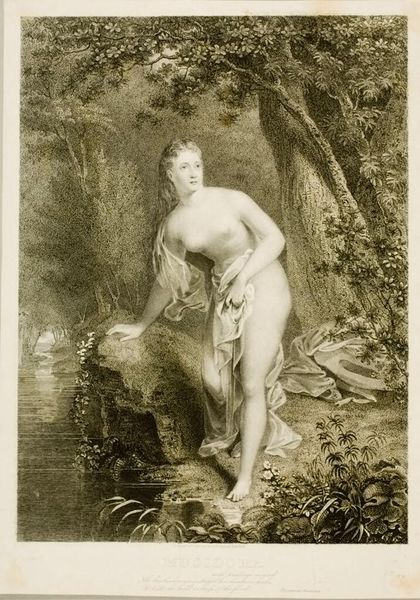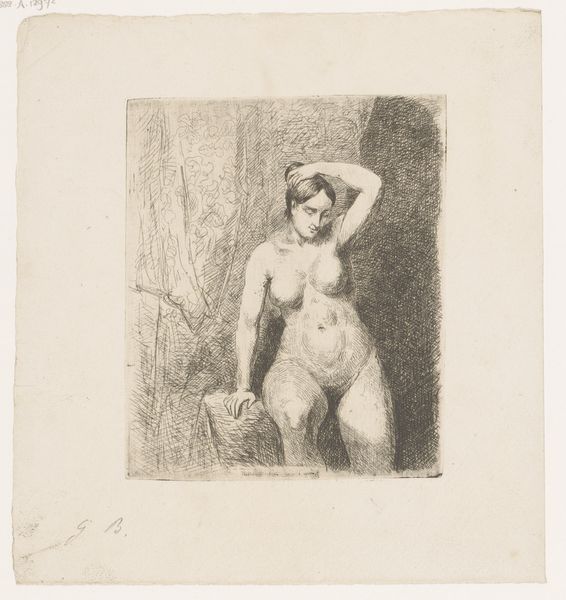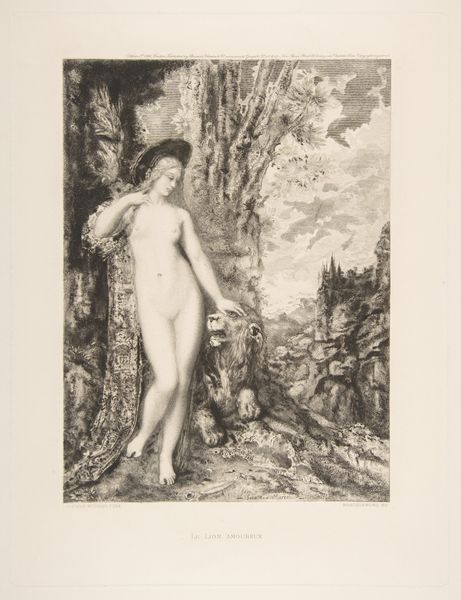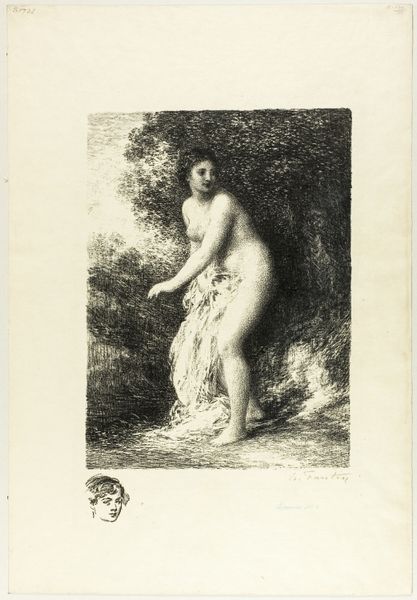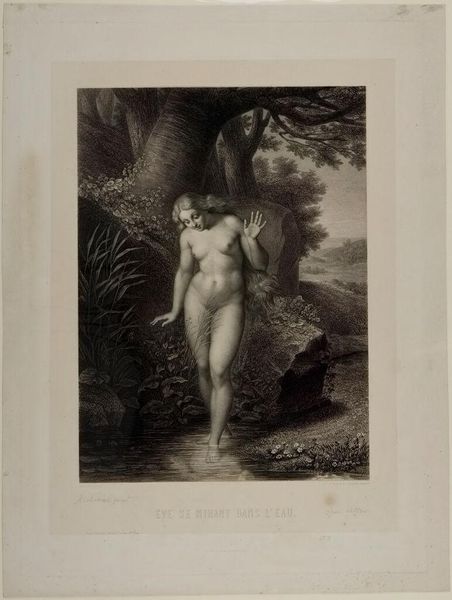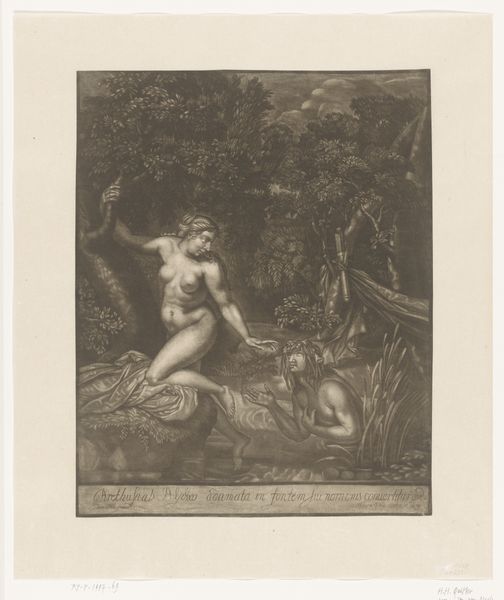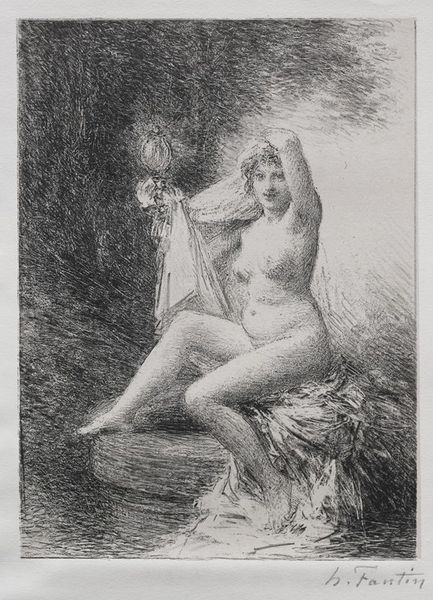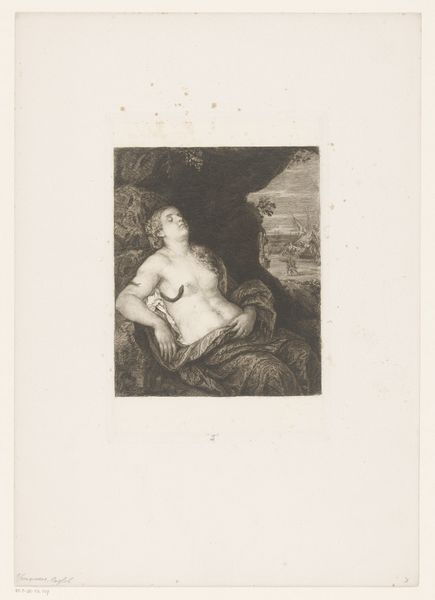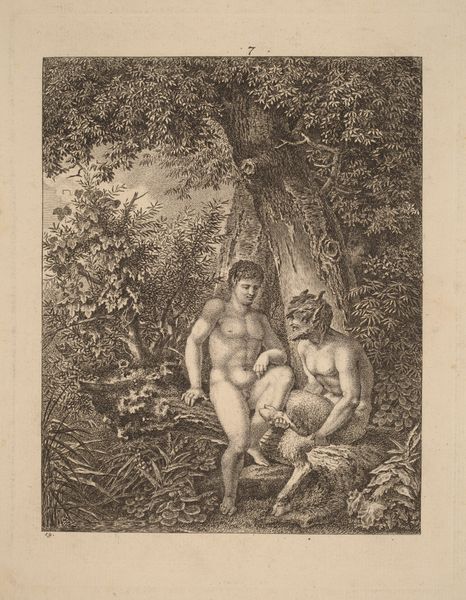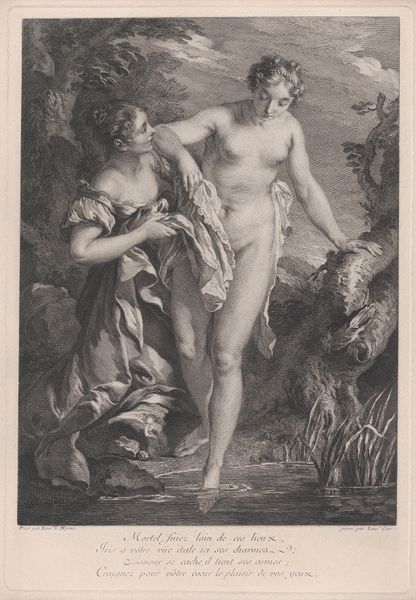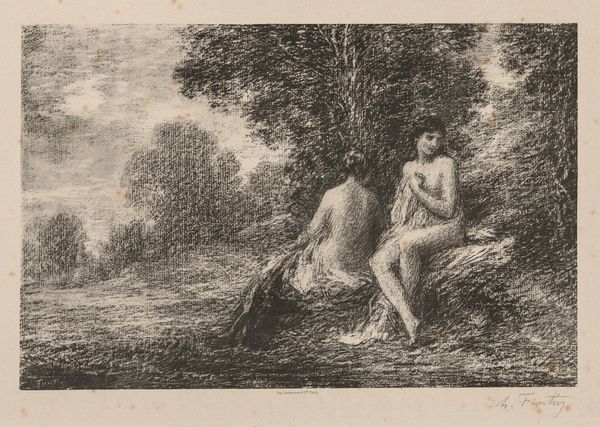
print, engraving
#
light pencil work
# print
#
landscape
#
figuration
#
pencil drawing
#
romanticism
#
history-painting
#
nude
#
engraving
Dimensions: 42.9 x 30.8 cm
Copyright: Public domain
Editor: This is "Musidora," an 1825 print by Asher Brown Durand. The engraving depicts a nude woman in a natural setting. It feels very classical and almost serene. What do you see in this piece, particularly considering its time? Curator: The figure of Musidora immediately places the artwork within a Western art historical canon that has historically, and problematically, sexualized the female form. The Romantic era frequently revisited classical subjects, yet it also marked a pivotal moment for how notions of gender and privacy were evolving. How does Durand's piece engage with these social shifts? Editor: I hadn't thought about the social context that way. The focus on her vulnerability makes me think about the male gaze theory and who this art was intended for back then. Curator: Precisely. The portrayal invites us to consider the dynamics of power and spectatorship. We should also question how Durand, as a male artist, shaped the representation of female desire and autonomy. Does he empower her or does he cater to the desires of a predominantly male audience? What do you feel the effect of this historical context has on how we view this piece today? Editor: Now I see how layers of historical baggage influence our modern understanding of "Musidora." It's not just a simple nude study, it's loaded with complex issues about gender and power. Curator: Absolutely, recognizing the socio-political environment helps to provide a nuanced reading. Art isn't created in a vacuum, and by dissecting these complex representations we further enhance our understanding of the piece and the period in which it was created. Editor: I'll definitely look at art from a broader intersectional perspective from now on. Thanks for sharing your insights!
Comments
No comments
Be the first to comment and join the conversation on the ultimate creative platform.
